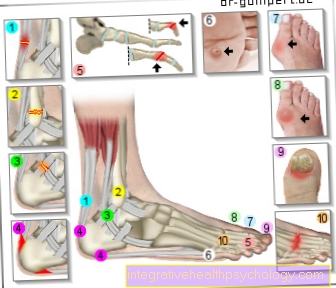validity

More on the subject of quality criteria
- objectivity
- Reliability
definition
The validity (also referred to as validity) is defined as the degree of accuracy with which a test procedure actually tests the characteristic that it was designed to measure.
So... the degree to which the test measures exactly what it claims to be measuring.
The validity is therefore an important scientific quality criterion.
The question to be answered is: What is actually measured in the test / measurement procedure?
Does the test really measure what is to be measured?
requirement: What is to be measured must be clarified in advance (definition of the ability or the construct)
How is the validity determined?
To Determination of validity there are 3 possibilities.
- logical reasoning (Content validity)
- Determination of the correlation with the criterion (Criterion validity)
- Determination of the correlation with the like (Construct validity)
In the Training-based performance diagnostics The first two forms of validity are primarily of interest, especially the Criterion validity.
1. Content validity
The validity of the content is given if from theoretical or logical considerations and Not validity is concluded based on empirical surveys.
1. Face validity:
The validity of the content is based on the justified presumption of validity.
So ... the test makes the impression that it is actually testing the skill that suits him. If the correspondence with the characteristic is so obvious, one also speaks of more logical, or trivial validity.
E.g. (Shots in football from the 16 m. Line as a determination of the shooting power or free throws from the free-throw line as a determination of the throwing precision in basketball.)
2. Expert rating:
If the validity of the content is not evident, further investigations by a competent person are necessary.
A test cannot simply be determined to be valid in terms of its content. It must first be confirmed by expert reports.
The expert rating is understood as a consensus among experts.
Process of the expert rating in the validity determination:
- The selected experts are either questioned in writing or orallyWhether the test checks the feature under test
- Experts get one questionnaire and must tick the skills that are determined in the test.
The validity of the content is considered positive if a match of more than 80% is achieved.
Notice! (Problems of content validity)
- A measuring instrument always tests several skills and / or skills in parallel and technical differences in the test execution can falsify the result
- Function fluctuations (The same test may test different characteristics in different subjects, e.g. push-ups (strength endurance vs. maximum strength at different performance levels)
2. Criteria-related validity (criterion validity)
The criterion validity defines the degree of statistical agreement between the result of the test and the criterion for which the test was determined.
(Example: a 30 meter sprint is correlated with long jump performance.)
Calculated correlation = criterion validity (validity coefficient)
The Criterion validity is considered particularly important in the Performance diagnostics.
The is divided Criterion validity in:
- Match validity - Test and criterion values are collected at the same time. The match validity should be greater than 0.80.
- Prediction validity - first test, then collection of the criterion values
Determination of the criterion validity:
- Determination of the test values (X) on a sample
- Collection of the criterion values (Y) on the same sample
- Calculation of the correlation (X, Y) = rxy
With a correlation of r = 1, the power can be estimated without errors.
external criteria-related validity: The test performance is correlated with an external criterion. (E.g. 6 jump is correlated with long jump)
inner criteria-related validity: The test performance is assessed using other measured values for the same range of validity. (E.g. CounterMovement Jump is assessed with the jump belt test)
3. Construct validity
Definition:
Construct validity is the extent to which a measurement method actually records the theoretical construct it is intended to measure.
In most cases the construct validity is determined by means of the confirmatory factor analysis
The construct validity is important for the theoretical clarification of what the test is supposed to measure.
construct = theoretical / conceptual structure (E.g. endurance, strength, speed, intelligence etc.)
Constructs can be divided into:
- homogeneous constructs: Skills that are closely related (E.g. jumping power - Maximum strength)
- heterogeneous constructs: Skills that are not closely related (E.g. strength - fitness)
Furthermore, the Construct validity divided into:
- Convergent validity (Agreement with other tests measuring similar factors)
- Discriminant validity (With which variables of other constructs should the test not correlate)
The construct validation takes place in 3 steps:
- Deriving testable hypotheses
- Review of the hypotheses
- Drawing conclusions





























